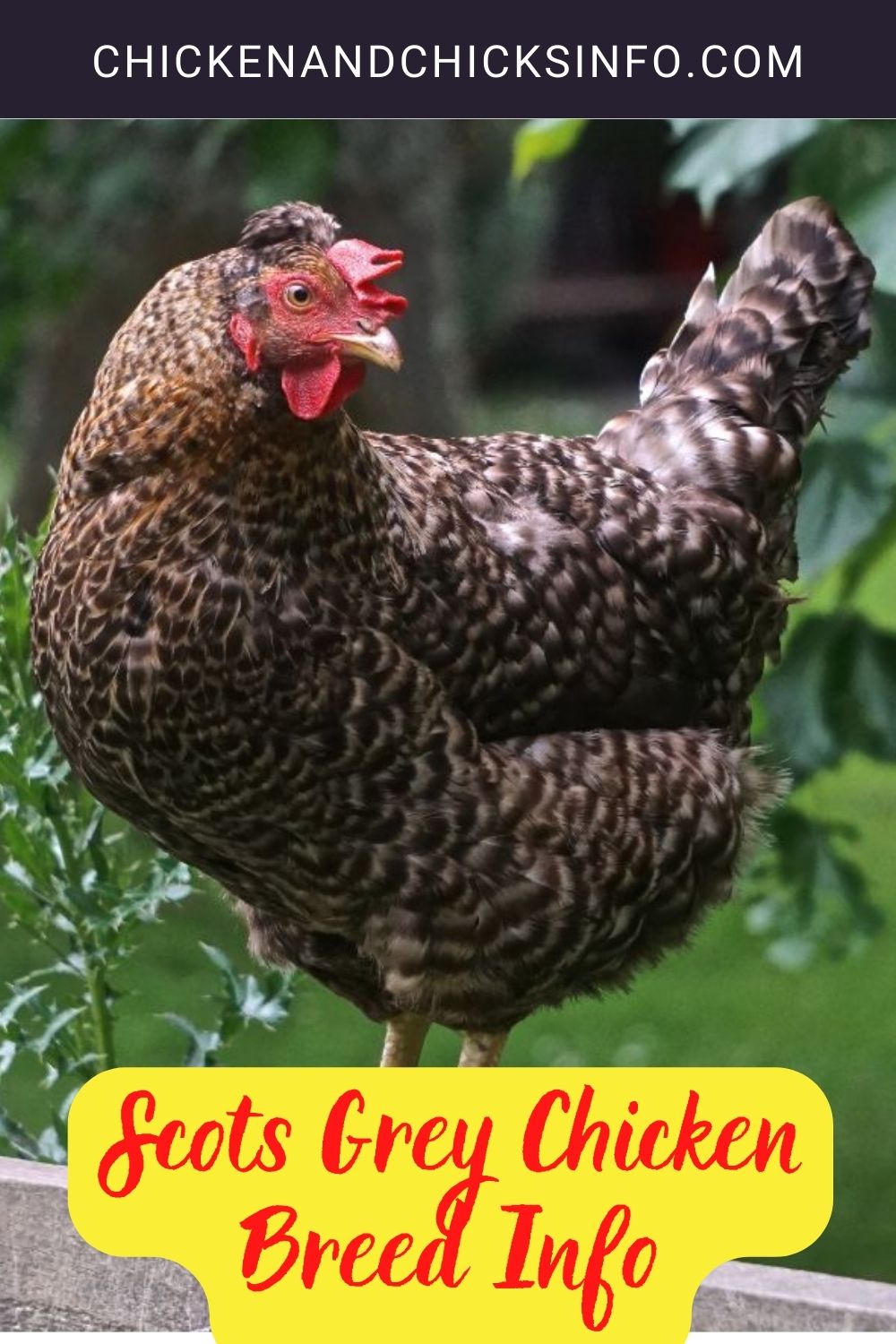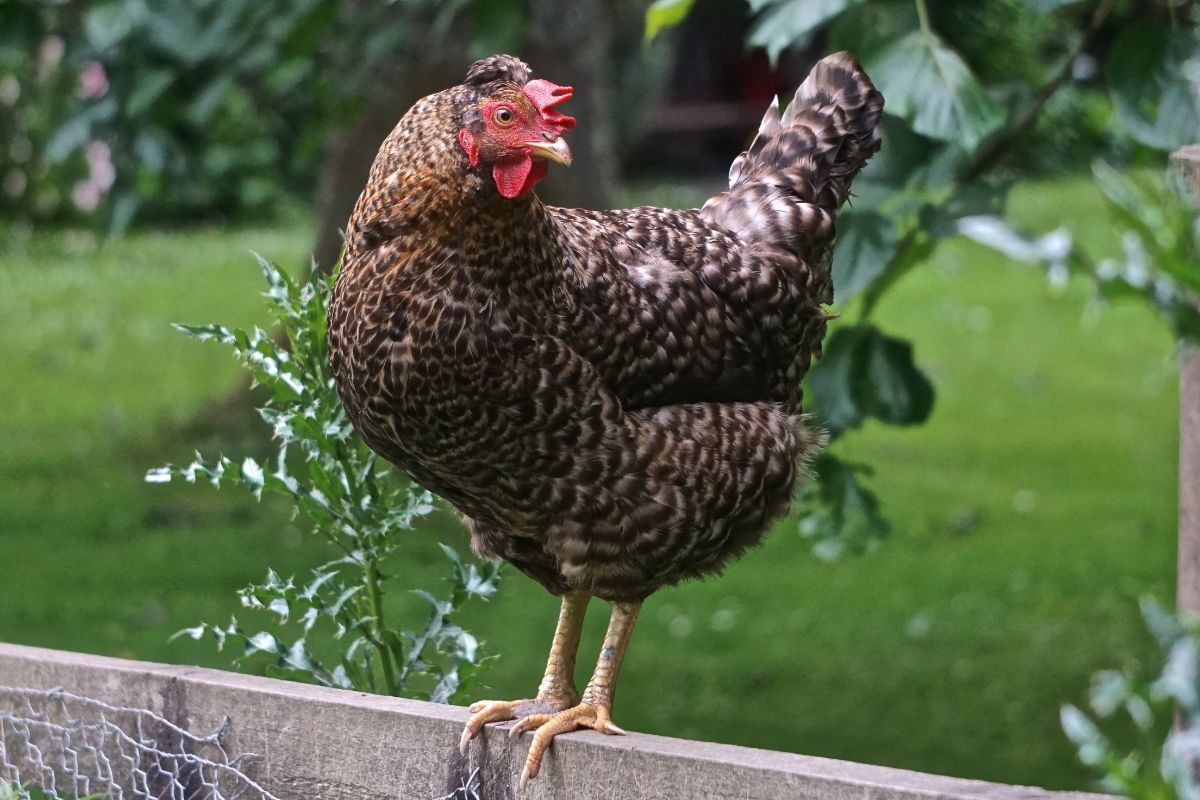
The Scots Grey chicken is a dual-purpose breed hailing from Scotland. Hens of this breed will lay between 150 and 180 large white eggs each year. They are not prone to going broody, but when they do choose to sit on their eggs, they make excellent, protective mothers.
Jump to:

Scots Grey Chicken Breed Quick Info
Scots Grey Chicken Description
| Scots Grey Type/Size: | Standard |
| Feather Color: | Black and white barred |
| Leg Type: | Clean |
| Leg Color: | White with black mottles |
| Skin Color: | White |
| Scots Grey Ease of Raising/Keeping: | Easy |
| Scots Grey Special Care Needs: | No |
| Is the Scots Grey breed a common, rare, or protected breed of chicken? | Rare |
Scots Grey Use
| Meat | Yes |
| Eggs | Yes |
| Dual Purpose | Yes |
| Scots Grey Temperament: | Alert, active |
| Scots Grey Ability/Likelihood to Free Range: | Yes |
Scots Grey Egg Production
| Egg Color | White |
| Egg Size | Large |
| Estimated Number of Eggs Per Year | 150-180 |
| Likeliness to Brood Eggs/Raise Chicks | Low |
Scots Grey Meat Production
| Dressed Weight Male | 5 lbs |
| Dressed Weight Female | 3.5 lbs |
Scots Grey Climate Tolerance
| Heat | Excellent |
| Cold | Excellent |
Scots Grey Age to Maturity
| Number of Months to Reach Full Size | 5-7 Months |
| Number of Months to Start Egg Laying | 5 Months |
| Number of Weeks/Months to Reach Meat Harvest Size | 4-6 Months |
Scots Grey Size at Maturity
| Male | 7 lbs |
| Female | 5 lbs |
Origins of Scots Grey Chicken
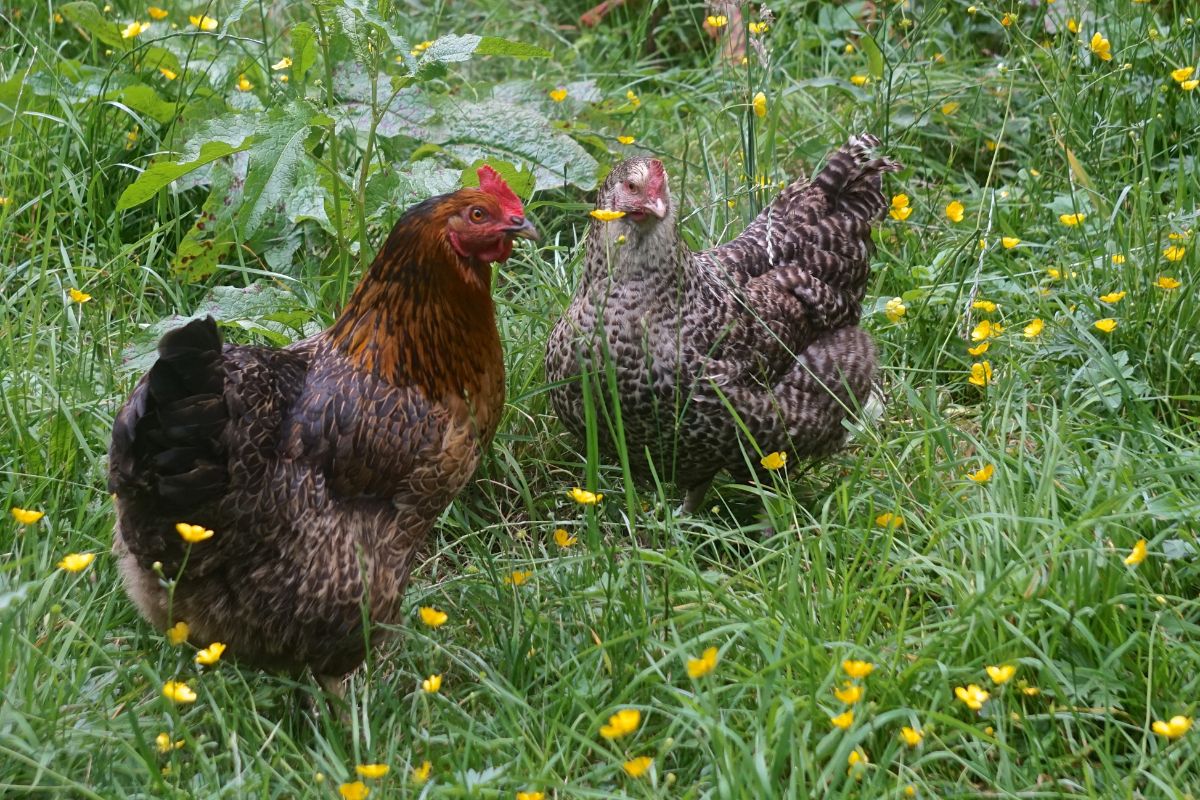
There is not much historical documentation when it comes to the Scots Grey chicken. It is known, though, that this breed is very old. Its roots can be traced back all the way to the 16th century in Scotland.
The official breed club was developed in the U.K. in 1885, and they remained a popular breed until 1940 when other production breeds surpassed them.
Today, they remain rare and are mainly bred and raised for exhibition purposes.
Some Things to Know About Scots Grey Chicken
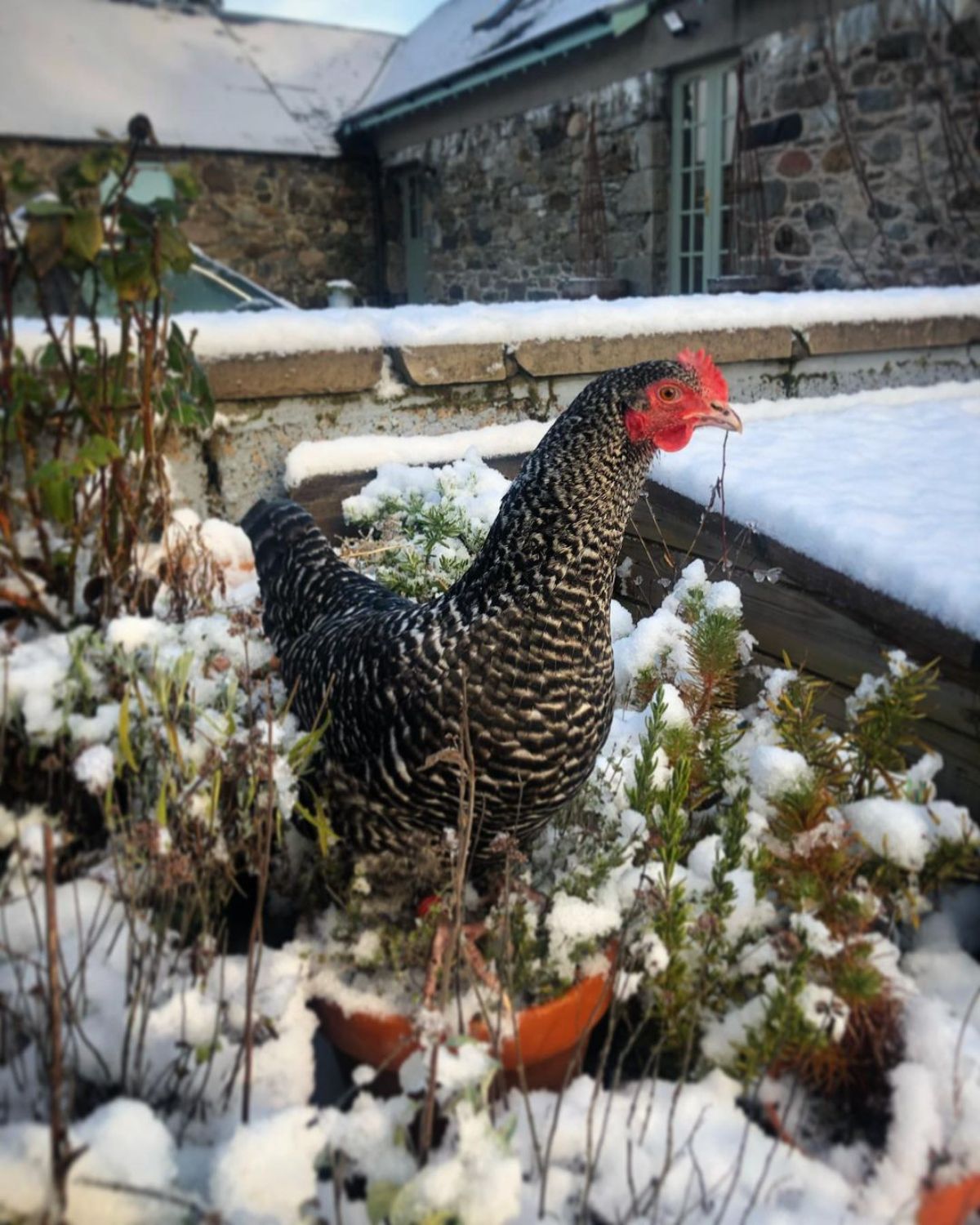
The Scots Grey chicken is tall with an upright stance and long legs. They have white skin, a red single comb and earlobes, and clean, strong legs. You’ll be able to tell them apart from another breed by their full tail.
There is only one color variety available (barred), and it looks similar to the Barred Plymouth Rock breed. There is a bantam version of this chicken, but it is not as popular as the large version.
How Easy is it to Keep Scots Grey Chickens?
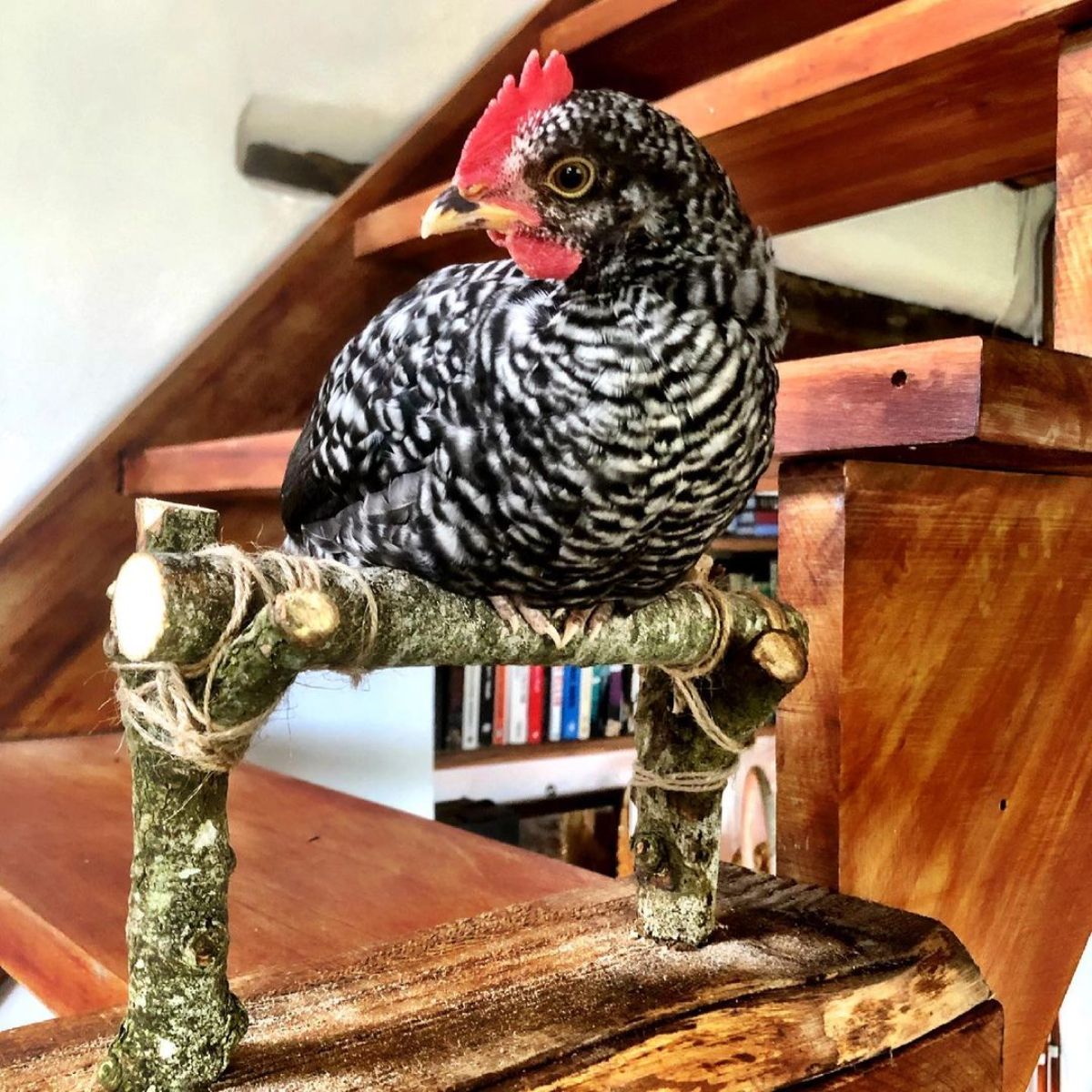
The Scots Grey chicken is hardy and known for their ability to adapt to any climate. These active, alert birds prefer to be in a free-range living situation. They are excellent foragers and will find tasty treats wherever they are allowed to roam. They will also roost in trees when given the opportunity.
They can be excitable when disturbed, and roosters can be aggressive during mating season, so this breed is not the best to have around children. However, they are not generally aggressive with people and make wonderful show birds.
Special Care and Considerations for Scots Grey Chickens
As with all chickens with a single comb, the Scots Grey is at risk of developing frostbite in the winter. You can use a swipe of vaseline to help protect their comb from freezing in low temperatures.
